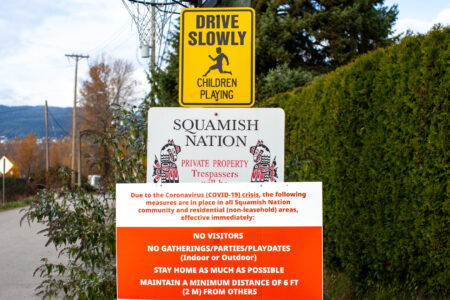
Events such as the 150th anniversary of Confederation, the 200th birthday of Sir John A. Macdonald or the War of 1812 are momentous events in the life of a nation and its peoples. Yet, as we mark their contribution to making us who we are today, it is important to acknowledge that the quarrel of conflicting facts, statements and actions means that these events do not evoke the same memories for all. Indeed, for First Nations peoples, especially those who have historic pre-Confederation and numbered treaties, the significance of these events is quite different from their significance to non-First Nations Canadians. Understanding these differences requires a careful consideration of the estrangement that characterized a significant part of Canadian nation-building, at the expense of First Nations peoples, their lands and values.
One core value of nation-building, especially for Treaty First Nations, was reconciliation. First Nations who entered into treaty did so through the principles of consensus, sharing and finding a better future together, based on mutual respect, recognition and benefit from the lands and resources. The treaties, including the numbered Prairie treaties, were more than simple real estate transactions. They represented, at their core, a political practice of reconciliation and consensus. Newcomers were welcomed. Extensive debate and discussion by very skilled political leaders of the Cree, Saulteaux, Dene and Assiniboine peoples yielded strong alliances and commitments on how different peoples would live together, while not disturbing or disempowering those First Nations peoples from the enjoyment of their lands, livelihoods or cultural and spiritual practices. The sacred ceremonial nature of concluding those treaties under the cultural norms and practices of the Prairie First Nations peoples included pipe ceremonies, gift exchanges and the invocation of spiritual and political bonds to run “as long as the sun shines and the rivers flow.” However, the success of this historical approach to reconciliation has diminished as a result of the failed government policies and practices that followed.
As First Nations peoples, we know the legacies only too well, but Canadians are still rebalancing their understanding of that history. This year, the Truth and Reconciliation Commission (TRC) will report after its important effort to catalogue the bitter and vicious impact of the Canadian Indian Residential School policy. Beginning in the 1870s and continuing until the last school was closed in 1996, more than 150,000 First Nations, Métis and Inuit children were taken away from their parents and placed in government-funded and church-run schools. As Prime Minister Stephen Harper noted in his 2008 apology, “Two primary objectives of the Residential Schools system were to remove and isolate children from the influence of their homes, families, traditions and cultures, and to assimilate them into the dominant culture…Indeed, some sought, as it was infamously said, ‘to kill the Indian in the child.’” Roughly 80,000 former students remain with us today, but the harm inflicted has been felt by numerous generations.
The report of the commission should be an opportunity for reflection. As we approach the milestone of Canada’s 150th anniversary, can we be confident that our many individual moments and efforts at reconciliation (such as Prime Minister Harper’s apology) have effectively ended this era of failed policies and ushered in a new Canada—one that is more akin to that imagined when those treaties were concluded?
Reconciliation is a term tossed about in different contexts and with a variety of purposes, yet it reflects a core value for treaty First Nations—somewhat akin to what “peace, order and good government” means to a great many Canadians. Reconciliation is the restoration of a friendship after an estrangement. It does not require agreement on every aspect of how to live together. It is not an apology that has been accepted once offered. Rather, it is about the process of coming together—a conscious choice that the future will be better if we work through difficulties and differences with an openness to hearing about, and responding to, the harm that has occurred. On some levels it is about partnership, but it has also come to be synonymous with healing individuals and relationships.
By shedding light on the lived experiences of residential school survivors and their families, the TRC has allowed for some important healing, as did the Aboriginal Healing Foundation that ran parallel to it for a period of time. Each of these speaks to the need to stand with the victims of a wrong, and to know the magnitude of the human effects of failed government policies. It speaks to the importance of not erasing these experiences from the celebration of Canadian successes and achievements. It speaks to balance and rebalancing.
Sadly, many of these major initiatives, like the Aboriginal Healing Foundation, were underfunded or lost support before their work was completed. Other good initiatives that reach real people in needy communities are sometimes ended too soon because Canadians do not understand the nature and importance of this work in promoting healing and rebalancing. We need to find and support the strengths of a community if we want to be reconciled. We cannot expect them to come through the events they have lived through without help and support from contemporary governments and society generally.
Reconciliation has been part of the Canadian approach going all the way back to those early treaty-making experiences in the pre-Confederation and colonial periods. The Royal Proclamation of 1763 and its antecedents promoted a concept of Canada that took hold in treaties. However, the treaty process was not completed. In British Columbia it still continues. But have we really understood our unique capacity for reconciliation, and its value as a process that can lead to the new federalism that will be required?
Of course, achieving that new federalism will mean dealing with some hard realities—in some instances, almost too hard for people to face. These include the immense social exclusion and ongoing impacts on First Nations children and families of these failed policies (especially the impact on girls and women) and the very slow integration and inclusion of First Nations people and businesses in the economic mainstream and in resource development and sharing.
Political parties that do grapple with reconciliation need more than a token Aboriginal policy or person to be successful. The era of symbolic gestures is long past—as we see from the rise of the Idle No More movement and other grassroots movements. These movements have called for reconciliation to be a broader consensus-building process, and political leaders cannot ignore them. We are witnessing in Canada the resurgence of First Nations’ confidence. And with this confidence comes a need for a deeper level of reconciliation within families and communities, with government at all levels, in corporate boardrooms and among shareholders.
First Nations have been empowered by Canadian courts, which have repeatedly told governments and industry they have a duty to consult and accommodate the interests of Aboriginal people. Governments have largely abdicated these responsibilities to the private sector. While this may have encouraged some important work in the marketplace, the courts keep bringing us back to basics: development must be reconciled with Aboriginal title and interests. This means a process for reconciliation that is more meaningful than “consultation” and that should lead to consent. We must return to the practice of seeking and reaching consensus: the tradition established by First Nation and Canadian leaders at the time of Treaty.
We must continue the consensus-seeking tradition established by First Nations and Canadian leaders.
We would be wise to recall the guidance from the Royal Commission on Aboriginal Peoples, shelved long ago, on how reconciliation and rebalancing requires a multistage approach. This approach must include many individual efforts and an expanded appreciation of history, as well as a new mandate for Canada, built on foundations that already exist: the treaties. In its published volumes the commission clearly explained this approach as a three-part process:
- a jointly developed, balanced view of Canadian history: “The starting point for renewing the relationship [must be] deliberate action to set the record straight” regarding violations of treaty promises, residential schools, relocation of communities, Aboriginal veterans, the Indian Act administration, etc. (vol. 1);
- an acknowledgment of the injustice and historic wounds: a “sincere acknowledgment by non-Aboriginal people of the injustices of the past…” (vol. 5), including a disavowal of discredited legal doctrines and policies based on them; and
- an acceptance of moral responsibility and commitment to a new relationship: “a genuine desire to make reparations…” as well as “a profound and unambiguous commitment to establishing a new relationship for the future” (vol. 5).
We are not yet at the third stage, but we are making progress. Much remains to be done, and the method of reconciliation we choose will be crucial. The profound and unambiguous commitment to establishing a new relationship for the future is not universal, meaningful or even charted at this point. A number of piecemeal efforts are nevertheless underway. Some of these are well intentioned and well designed (like the TRC), but ambiguity remains on all sides. It is an ambiguity that could lead us away from reconciliation, if there is not a clear and decisive commitment by leadership in all political parties and corporate boardrooms, as well as in First Nations and non-First Nations communities. This commitment needs to embrace the value and importance of the relationship, while striving for a rebalance and shared success, reflecting the values underpinning those First Nations treaties that made way for Canada not so long ago.
Photo: iStock






